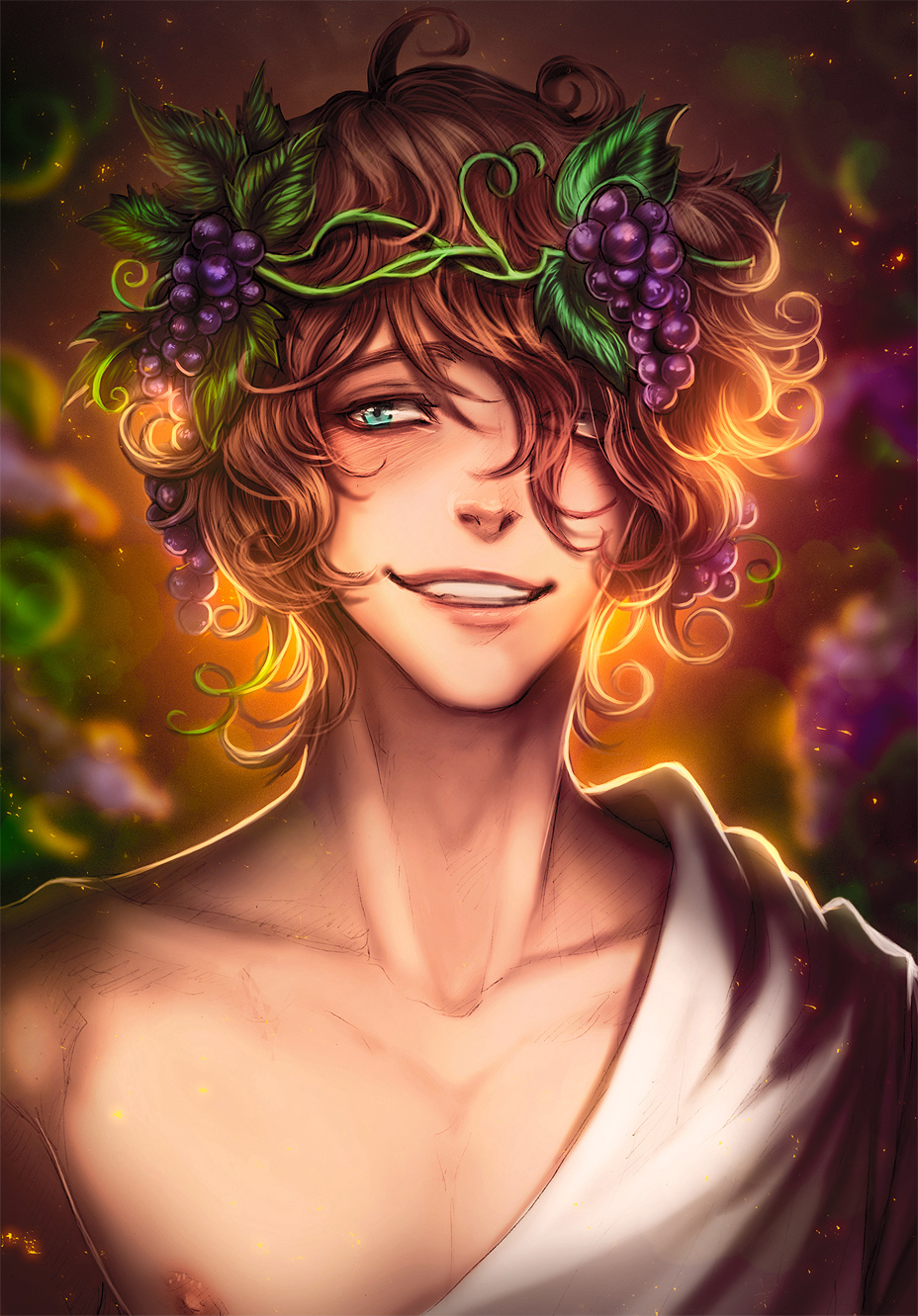Dionysus artwork has long fascinated art enthusiasts and mythology lovers alike. This unique form of art brings to life the vibrant and energetic essence of the Greek god Dionysus. Known as the god of wine, fertility, and festivities, Dionysus is often depicted in art as a symbol of celebration and vitality. From ancient frescoes to modern interpretations, Dionysus artwork continues to captivate audiences around the world.
Throughout history, artists have drawn inspiration from the mythology surrounding Dionysus, creating pieces that reflect his divine attributes. Whether through painting, sculpture, or digital art, these works celebrate the god's role in ancient Greek culture and his enduring legacy in the modern world.
This article delves into the fascinating world of Dionysus artwork, exploring its history, cultural significance, and artistic interpretations. We will also examine how contemporary artists continue to honor the mythology of Dionysus in their creations.
Read also:Who Is Chad Boyce The Rising Star In The Entertainment Industry
Table of Contents
- Biography of Dionysus
- History of Dionysus Artwork
- Symbols in Dionysus Art
- Ancient Dionysus Art
- Renaissance Interpretations
- Modern Dionysus Art
- Digital Dionysus Art
- Collectors and Enthusiasts
- Cultural Impact of Dionysus Art
- Conclusion
Biography of Dionysus
Mythological Origins
Dionysus, also known as Bacchus in Roman mythology, is one of the most intriguing figures in Greek mythology. Born to Zeus and the mortal Semele, Dionysus is celebrated as the god of wine, fertility, and revelry. His mythological origins are steeped in drama and intrigue, with stories of his birth, exile, and eventual return to Olympus.
Biodata of Dionysus
| Attribute | Details |
|---|---|
| Name | Dionysus (Greek) / Bacchus (Roman) |
| Parents | Zeus and Semele |
| Role | God of Wine, Fertility, and Festivities |
| Symbols | Grapes, Thyrsus, Leopard Skin |
History of Dionysus Artwork
The history of Dionysus artwork dates back to ancient Greece, where his image was frequently depicted in pottery, frescoes, and sculptures. These early works of art often showcased Dionysus surrounded by his followers, the Maenads, and his sacred animal, the panther. Over time, the representation of Dionysus evolved, reflecting the cultural and artistic trends of different eras.
Symbols in Dionysus Art
Artists throughout history have incorporated various symbols into their depictions of Dionysus. Common symbols include:
- Grapes and vines, representing fertility and abundance.
- The thyrsus, a staff wrapped with ivy leaves, symbolizing his divine authority.
- Leopard skin, often worn by Dionysus, signifying his wild and untamed nature.
Ancient Dionysus Art
Ancient Greek and Roman artists were among the first to immortalize Dionysus in their artwork. Pottery from this period often features intricate depictions of Dionysus and his followers engaged in festive celebrations. These works not only served as decorative pieces but also conveyed the cultural significance of Dionysus in ancient society.
Renaissance Interpretations
During the Renaissance, artists rediscovered the beauty of classical mythology, leading to a resurgence of interest in Dionysus artwork. Painters such as Titian and Caravaggio created masterpieces that brought the god of wine to life on canvas. Their works often emphasized the sensuality and vitality associated with Dionysus.
Modern Dionysus Art
In the modern era, artists continue to draw inspiration from the mythology of Dionysus. Contemporary interpretations often blend traditional symbols with innovative techniques, resulting in works that resonate with both classical and contemporary audiences. From abstract paintings to mixed media installations, modern Dionysus art reflects the diversity of artistic expression.
Read also:Good First Half Marathon Time A Comprehensive Guide For Beginners
Digital Dionysus Art
The rise of digital art has opened new avenues for artists to explore the mythology of Dionysus. Digital platforms allow creators to experiment with vibrant colors, dynamic compositions, and interactive elements, bringing the god of wine to life in exciting new ways. This form of art has expanded the reach of Dionysus artwork, making it accessible to a global audience.
Collectors and Enthusiasts
Collectors and enthusiasts of Dionysus artwork are drawn to the rich mythology and cultural significance behind these works. Whether through acquiring ancient artifacts or supporting contemporary artists, collectors play a vital role in preserving and promoting the legacy of Dionysus in the art world.
Cultural Impact of Dionysus Art
Dionysus artwork has had a profound impact on both art and culture. By celebrating the god of wine and revelry, these works reinforce the importance of joy, creativity, and community in human life. From ancient festivals to modern art exhibitions, the influence of Dionysus continues to inspire and captivate people worldwide.
Conclusion
In conclusion, Dionysus artwork represents a celebration of creativity, mythology, and cultural heritage. From its ancient roots to modern interpretations, this form of art continues to evolve, captivating audiences across generations. As we explore the history and significance of Dionysus artwork, we are reminded of the enduring power of art to connect us with our past and inspire our future.
We invite you to share your thoughts on Dionysus artwork in the comments below. Whether you're a collector, artist, or simply an admirer of mythology, your insights are valuable to our community. Additionally, feel free to explore other articles on our site that delve into the fascinating world of art and mythology.

